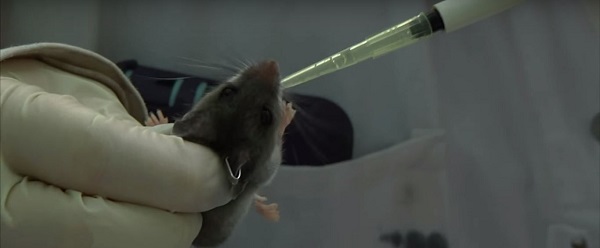The typical house mouse is a small mammal belonging to the order Rodentia. This little guy typically has a pointed snout,
small round ears, and a hairless tail. Although the house mouse is really a wild animal, it tends to live in association with
humans. They can also be domesticated and are then called “fancy mice” or be used as lab animals. These creatures are by nature
highly adaptable, and will seek shelter in both their natural habitat (wooded areas), and convenient shelter (like homes and other
buildings). Mice are susceptible to inclement weather like extreme heat and cold, and prefer comfortable shelter like your home.
Mice are, by and large, an omnivore. They can be a serious danger to homeowners because they will chew wood, wires, plastic and
other house materials in order to reach food or make as nest.

A typical mouse is 3-4 inches long, with a 2 inch tail, and weighs 1.5-2 oz when fully grown. Its coat is usually really musty to light
brown with a lighter belly. In the wild mice prefer to burrow in the ground litter (leaves twigs etc.) but the house mouse likes attics,
in between walls, and upper floors of homes. It can be found making nests from litter, shredded paper, chewed wood, shredded cloth, and
insulation. Mice can carry a wide range of nasty of diseases like, salmonella, typhus, and toxoplasmosis. They are also usually pest ridden,
carrying fleas, and lice. House mice are usually seen on all fours, but while eating, or engaging in activities like fighting, or looking around,
they have been known to rear up on their hind legs using their tail as a support. This particular behavior is commonly known as "tripoding". Mice
are excellent jumpers, being able to leap more than twice their length vertically.
They are also accomplished climbers, and swimmers. Mice, like many rodents, are mostly crepuscular or nocturnal. This means that they are most
active at dawn, night, and dusk. They have a natural adversity to bright lights. Mice in your house tend to sleep extended periods of time. It is
not unusual for a house mouse to sleep up to 12.5 hours per day. They try to live near their food and water sources, and construct their nests in those
locations as well. Mice are territorial, having one dominant male living together with several females and their young. Dominant males usually respect
territories and will only enter another territory when he confirms it is vacant. Although they mainly feed on plant matter, mice are by nature omnivorous.
There is very little they will not consume including their own feces to the nutrients they need. Mice are born hairless, but within a few days grow fur.
By day 10 you can determine sex, and within a few weeks they can reproduce.
Once they move in, mice are almost impossible to get rid of. Your best bet is to consult with local professionals, and devise a plan for prevention.
Keeping your yard free of debris, excessive clutter, standing water, and open trash will help keep mice under control. Stow all garbage in sealed containers,
and don’t leave out pet foods or feed. Check your home’s exterior for cracks or holes that would allow mice entry in to your home. While mice are probably more
interested in living in a natural habitat than in yours, they will always take advantage of free food, abundant water, and safe shelter.
Go back to the
How to get rid of mice in the attic home page. You might also want to read about
how to kill mice and why the use
of snap traps is better than
mouse poison. Read an analysis of the different types of traps and how to use them on the
how to trap mice page.
Learn why
bait is not as important as trap type, placement and location. Also read a full analysis of
mouse repellent to understand why it
never works. If you see droppings and want to identify them, read the
mouse poop page. If you need to hire professional help, read about
how much does mouse removal cost?
or you can read this site to learn how to do it yourself. Feel free to email me about Biology of the Mouse